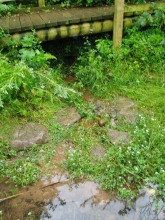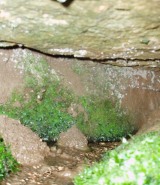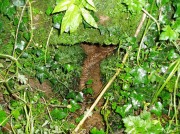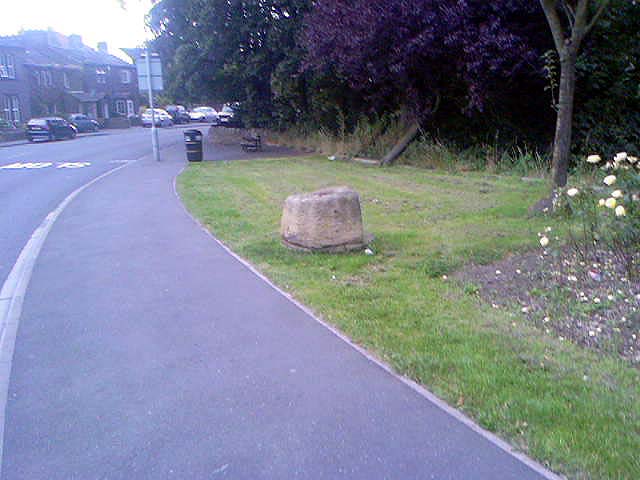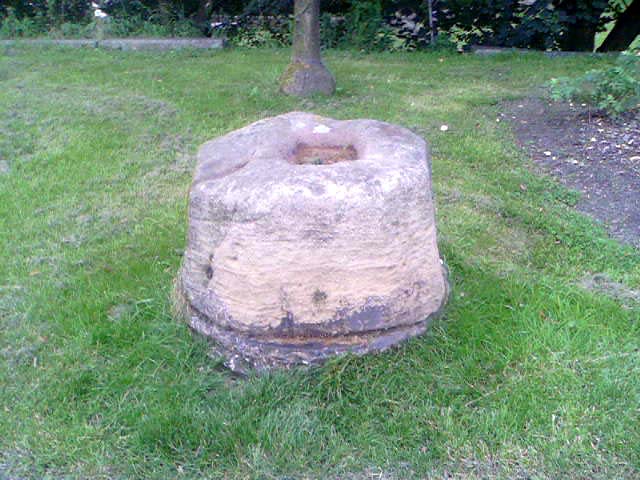Healing Well: OS Grid Reference – SK 615 489
Also Known as:
- Keen Well
In Calverton, take Renals Way off the main street and follow it around until you reach the end and a copse. Take the left hand path. When the footbridge is reached the spring head is encountered.
Archaeology & History
Also known as the Keen Well, fortunately it still survives. It arises between some sandstone blocks forming a small cave where a strong spring flows and fills a small pool with some rough stones around it. The pool does not appear very deep although is it overgrown in parts. A footbridge crosses over the springhead, meaning that one has to peer under it to see the spring. The area surrounding Renals Way and Dark Lane is ear-marked for development and I hope that this spring can survive this stage of its history.
Folklore
Bob Morrell (1988) in his Holy Wells of Nottinghamshire notes a site (although he does not name it), which was attended by pilgrims near and far, and had the tradition that ‘kings’ after hunting in Sherwood Forest would visit it ‘to quaff the nectar’.
Morrell (1988) fails to state whether it still existed, but the site in question would appear to be the Keen Well. It’s name being possibly derived from King’s Well. According to Mr. Peck of the local history museum, this was supposed to have used by ‘Old Saxon Kings’ to bathe their eyes as a protection against failing sight. One of the medieval kings and his attendants are also reputed to have stopped here whilst travelling to the North.
References:
- R.W. Morrell (1988) Nottinghamshire Holy Wells
- R.B. Parish (2008) Holy wells and healing springs of Nottinghamshire
Links:
© R.B. Parish, The Northern Antiquarian
